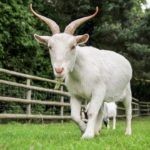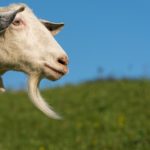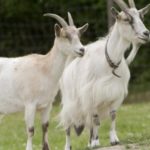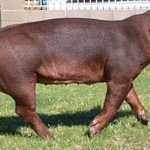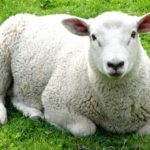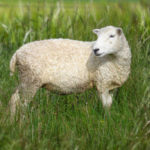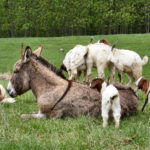Goats
 Goats are one of the most ancient pets. They were domesticated about 9,000 years ago – later dogs, but before cats, horses, donkeys and sheep. It is interesting that domestic goats have a polygenic origin, that is, they come from several wild species of mountain goats. The bearded or bezoar goat living in the mountains of the Caucasus, Asia Minor and Central Asia had the greatest influence on the formation of domestic goats, but in the creation of individual breeds, they could use vintrohores and alpine goats.
Goats are one of the most ancient pets. They were domesticated about 9,000 years ago – later dogs, but before cats, horses, donkeys and sheep. It is interesting that domestic goats have a polygenic origin, that is, they come from several wild species of mountain goats. The bearded or bezoar goat living in the mountains of the Caucasus, Asia Minor and Central Asia had the greatest influence on the formation of domestic goats, but in the creation of individual breeds, they could use vintrohores and alpine goats.
The hearth of domestication was Asia Minor, the first domestic goats appeared on the territory of modern Israel, Syria, Lebanon, and Turkey. A little later they were domesticated in Ancient Greece and on separate islands of the Mediterranean Sea. Goats were very convenient and profitable pets, so they quickly spread in different countries. First of all, they began to breed in all countries of the Near and Middle East, Southern Europe and Africa, which formed their own breeding traditions for these animals and local breeds appeared. However, people brought domestic goats to other continents, and now these animals can be found literally in every country. The largest number of livestock is concentrated in African countries and arid regions of Asia, where other types of livestock lose to goats in competition. And the most valuable breeding stock is concentrated in Switzerland, Germany, France. In 2008, the world contained more than 15 million dairy goats and almost 5 million meat.
Among other types of livestock, goats are distinguished primarily by their unpretentiousness and compact size. The height of the goat at the withers does not reach 1 m, the weight is 25-100 kg, so it’s easy to take care of the goats even for the children. Goats are not very demanding with regard to feed: they can eat many kinds of herbaceous plants, including undersized ones, can gnaw the bark, eat branches and leaves of trees. On occasion, they taste any plant-based material, for example, they can pick up cigarette butts, have paper and packing bags, and chew ropes. Goats can do without succulent fodder and concentrates, are well tolerated by drought and high temperatures, many breeds are also not afraid of frost.
All these qualities of goats have led to the fact that they have become very common animals in unfavorable areas, as well as in poor families, because a small and unpretentious goat does not require much care, and its milk can feed a few people. But do not assume that the goat is a companion of poverty. In agrarian areas, goats are also bred a lot. In such prosperous countries as Switzerland, Germany and France goats love, and their milk is valued above cow.
In France, even produce special cheeses from goat’s milk. In general, goat’s milk is closer to human in composition, therefore it is traditionally used as a substitute for the female. Modern industry produces from goat’s milk various products, including ice cream and yogurts. There is an opinion that goat’s milk smells unpleasant. In fact, the smell appears only in neurological animals, as well as in goats, which are kept together with a mature goat. Well-groomed goats do not convey the smell of milk, moreover, there are breeds that practically do not smell. It is estimated that in the world goat milk consumes more people than cow’s, although in absolute figures it is produced less.
Another little-known use of goats is meat. Meat of these animals is not used everywhere for food, in Europe it is little used. But in the countries of Asia, Africa and the United States, goats are grown for fattening along with rams. Only meat of young goats (3-9 months) is used for food, it is very tender, quickly prepared, has excellent taste qualities. The meat of adult animals is also edible, but it is stiffer and can have an unpleasant smell. When fattening goats quickly gain weight, and most importantly, can use pastures that are unsuitable for cows and horses. This makes goats an indispensable agricultural animal in mountainous and semi-desert regions.

